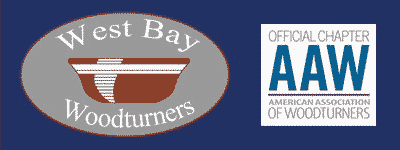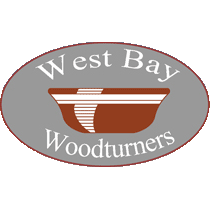Next Meeting
Wednesday October 18,
7 pm at Bridges Church, 625 Magdalena Ave,
Los Altos 94024

Program
Regular Meeting: The program for October is “Grind, Grind, Grind”. This is a follow up from Tina’s demo from last month where we had many discussions around the types of grind. David will show and discuss the most common gouge grinds, how to sharpen, and demonstrate the cutting with each one. Then in order for YOU to try out the various grinds, and learn to sharpen our own tool, we will host a…
Hands-on open shop: at the Palo Alto Adult School woodshop where you will be able to try for yourself the various grinds and see how it feels/cut/perform. This will allow you to pick a favorite for your kind of work. We will also have grinders set up with a few sharpening systems to try and fix/improve, maintain your gouge grind. This will take place Sunday Oct 22, 2pm – 4pm. Location is 85 Churchill rd, Palo Alto. Follow the driveway between the playing fields straight to the end to the woodshop building.

President’s challenge:
Show a turning with something you learned from Tina’s presentation on Advanced Basics for Bowl Turners. It could be about tool positioning, body motion, anything you picked up from the presentation.
Upcoming Meetings
November: Next Year’s board elections.
December: Holiday potluck
Notes from the Last Meeting
by Laura Rhodes
Wednesday September 20, 2023
A full gallery of pictures, thanks to Angela Gunn, can be found here:
https://photos.google.com/share/AF1QipMksT5OqO_cJK2Z96-mN-zVjZNfMQECjfaobS9O4bQ-O7RNErRg19xY7tqVtcRy6A?key=blF1aDN2YklWckd5LTMxbzFPdWhUaGVNM2hONjdn

Tina Chou – Advanced Basics for Bowl Turners – Wednesday, September 20, 2023
Tina’s presentation was a masterful tour of the basics of bowl turning. She covered five main topics:
- Wood comes from trees
- Safety starts off the lathe
- Finesse beats force
- Big is smooth
- Make what you like
Each topic was augmented with turned examples, excellent visual aids, and live demonstrations.
A branch section was used to show how a bowl blank is cut from a tree. Slices from a branch showed the orientation of typical bowls, live edge bowls, and design choices when faced with an off-center pith. She also showed how a collection of bowls, quarter-sawn platters, and a smattering of pen blanks can be cut from a large diameter log.
Tina demonstrated the turning with a 10” diameter birch blank, a 5/8” bowl gouge and a spindle gouge. To get the cleanest, easiest cut, it is best to cut in the direction of supported grain. To illustrate what is meant by supported grain, she had bowl silhouettes with bandsaw cuts parallel to the grain direction. She showed how to make a properly sized and fitted tenon with no gaps and proper registration for the chuck to hold the bowl for hollowing. Tina demonstrated proper body motions and tool positioning to turn the outside and inside of the bowl both efficiently and safely.
In a quick exploration of bowl design, Tina focused on the steps you take as you refine what shape you want for your bowl. From a chunky basic beginner, steep-sided bowl with a recess to hold the chuck, you can up your design game by focusing on the following areas successively: the tenon; the curvature of the bowl outside; the curvature of the bowl inside; the wall thickness; the rim (tilting in, tilting out, or flat); shaping the bottom of the foot; and, finally, decorations (such as beads or texturing).
President’s Challenge – Use of Texturing Tools

Harvey Klein presented a very colorful bowl with carved grooves. He initially spray-painted the piece black and then used the Jo Sonja iridescent paints to add the color. He also showed a carob “work in progress” with a textured rim.
John Sauer showed one of his signature tops made of African Blackwood, amboyna, and pick ivory. The top had chatter work on the end and knurling on the side. Its stand had a rose engine turned bottom.
Tom Gaston had a silver maple bowl featuring chatter work on the edge and friction burning.
Dave Vannier showed two bowls whose outsides were covered with pyrography “doodles”.
Show and Tell

Bud Trapp had a cocobolo and yellow wood bottle stopper. He showed how he uses a tap in a drilled hole to prepare his blanks for use in hard, dense woods with the Niles bottle stopper mandrel.
Harvey Klein showed a couple carob bowls turned from cores provided by Dave Vannier. He also presented a black oak and bacote box with finial that was ebonized.
Angela Gunn proudly showed off her first bowl turned with a proper bowl gouge.
John Sauer presented another top, this one of tulipwood and blackwood in an egg-shaped stand. There is rose engine work on the stand.
Nathaniel showed four bowls/platters of silver maple, all finished with walnut oil. The wood came from a neighbor’s tree that came down in July 2021. The unusually shaped tree was 4 feet in diameter at the base and had five (count’m FIVE) large branches, each 36 inches in diameter.
Tom Gaston presented a unique two handled bowl formed from a pine branch with a gall. He put blue tape flaps on the ends of the branch to warn him not to touch the whirring helicopter while turning. He also showed a bowl with a marbleized bottom, two silver maple bowls and a bowl made from plum wood.
Bob Bley showed two hollow forms from Maple burl with the burl featured as a live edge on the rim. One of the forms had a turquoise inlay. To pack in the turquoise fragments in a hole along the curved side of the form, he inserted a balloon covered with mold release and inflated it inside the form.
President’s Message
I am excited to finally open up the Palo Alto Adult School woodshop to our turning group. We now have 5 functioning lathes and a few grinding stations. This will be a first tryout of holding a group hands-on activity there, and I hope it will prove to be a good space fur future demos and classes. This winter semester will be the first time we offer an official woodturning class with some coaching and practice time. We already have a few new members that came out from learning to turn there, and I think we might see more benefits for our club as time goes by. So come check it out Sunday Oct 22, 2pm-4pm!
Claude Godcharles
“As the Wood Turns” by Dave Vannier
We had a discussion on finishes recently. This is a topic that comes up almost every year, and since there is no such thing as THE finish, it probably will keep coming up. Every finish has pros/cons. Some finishes take a lot of time to apply. Others are easy/difficult for the owner to renew. Wood types also have an impact on how well the finish works. I use several different kinds of finish, depending upon the wood and the type of turning. Warren Adkins convinced me early on to use the GF bowl finish for functional bowls. A number of the advanced turners echoed his words of wisdom. It can be a finicky finish to apply, takes time to cure between coats, and can’t really be re-applied by a customer. But it does a great job of protecting the wood, is very durable, and I can get anything from a flat look to a high gloss with the same can. For items that are handled a lot, I like danish oil or wipe on poly (sometimes referred to as WOP). Items I’ve airbrushed work well with a diluted danish oil. WOP is quick to apply, and I stick with gloss. To make it flat, the last coat is a flat version. I experimented with lacquers early on, but concluded the odor was more than I could handle. Might be a fine finish, just not something I want to work with. I use a lot of shellac, but really just as a sanding sealer. Doesn’t feel like it provides the durability I want. I also don’t buff. Yes, it can make things shine, for a while. But when I sell a piece, I don’t want the customer to feel like he was ripped off when the wax wears off in a month or two. I had that problem with walnut oil. Some people have allergies to nut. Yes, the walnut oil is safe, but having that discussion with a potential customer isn’t worth my time. Can’t tell you how many people nodded politely, put the bowl down and walked away. Not sure if they didn’t believe me, or just didn’t want to take the risk. Mineral oil never cures. Really easy to apply, and doesn’t show scratches the way other finishes do, but leaving a mess on a table cloth, just isn’t for me. All this is my preference, not a rule. Your choices and trade offs might be totally different. One truth is, any clear finish is food safe once cured. Lots of articles in past AAW magazines on that point. So, what is your go to finish or finishes?
WBW board members and committee chairs
President: Claude Godcharles
Vice President: Tom Gaston
Treasurer: Jon Bishop
Secretary: Roman Chernikov
Member at Large: Fred Colman
Meeting Program Coordinator: Vacant (Claude G acting)
Visiting artist Coordinator: Vacant (Bob Bley acting)
Anchor seal: Dennis Lillis
Craft Supply: Tina
Librarian: Kelly Smith
Audio Visual: Curtis Vose
Website & Newsletter: Vacant (Roman, Claude and David acting)


Leave a Reply